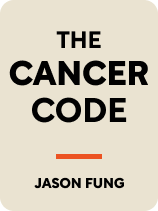

This article is an excerpt from the Shortform book guide to "The Cancer Code" by Jason Fung. Shortform has the world's best summaries and analyses of books you should be reading.
Like this article? Sign up for a free trial here.
How does cancer spread to other parts of the body? Is there a way to prevent cancerous cells from migrating and invading other organs?
When cancer spreads to other parts of the body, it’s called “metastatic cancer.” In order to metastasize, cancerous cells must travel to other parts of the body through the bloodstream. According to Dr. Jason Fung, this process happens in cycles because the immune system will mount its defenses to prevent cancerous cells from spreading.
Here’s how cancer metastasizes and invades other organs.
Cancer Metastasis Explained
How does cancer spread throughout the body?
As a cancerous tumor grows, it sheds cells into the blood, where they are carried to different parts of the body. Those cells invade tissue in other places and give rise to new, secondary tumors.
However, Fung says that the process of metastasis is more complicated than many people think. The cells shed by the primary tumor face enormous evolutionary pressures: First of all, the immune system will find and destroy most of these cells while they’re still in the blood. Then, those few that can evade the immune system are still unlikely to survive—for example, a cancer cell that evolved in the liver wouldn’t be well suited to grow in the stomach.
Therefore, rather than simply spreading out from the primary tumor, metastasis can be a circular process. Malignant cells—further evolved from the evolutionary pressures they faced while traveling through the body—sometimes return to that first tumor and reattach to it in a process called tumor self-seeding. Now, these new cells must compete with the original cancer for resources; only the cells that reproduce most quickly and invade other tissues most effectively will survive.
Over numerous cycles, this process eventually gives rise to cells that are strong and aggressive enough to survive in other parts of the body, and those are the cells that go on to form secondary tumors. In other words, cancer doesn’t just fight against the body’s defenses; it’s in constant competition with itself to produce the hardiest and most virulent organisms possible.
| Treatment Implications of Self-Seeding As it turns out, cancer cells don’t return to the original tumor simply by chance; one study observed that tumors send out chemical signals encouraging circulating cancer cells to reseed it. That same study found that—as Fung says—self-seeding increases how quickly cancer grows and how effectively it performs other functions like angiogenesis. As with every new discovery about how cancer grows and develops, doctors are hopeful that the discovery of self-seeding will provide new opportunities for targeted treatments, allowing them to fight cancer more effectively and with fewer harmful side effects. By preventing self-seeding, it may be possible to slow or even stop cancer’s growth and spread throughout a patient. It should also prevent local tumors from reappearing after surgical removal, as commonly happens with breast cancer. |

———End of Preview———
Like what you just read? Read the rest of the world's best book summary and analysis of Jason Fung's "The Cancer Code" at Shortform.
Here's what you'll find in our full The Cancer Code summary:
- A guide on what cancer is and how it works
- A deep dive into the three different models of cancer
- Why there is hope for the future of cancer treatments






